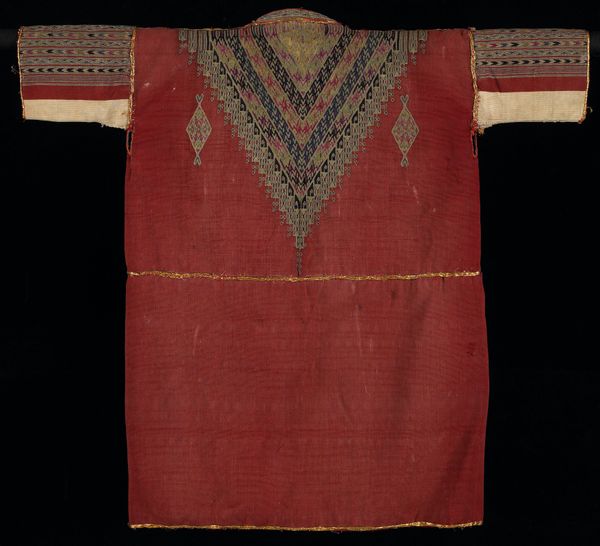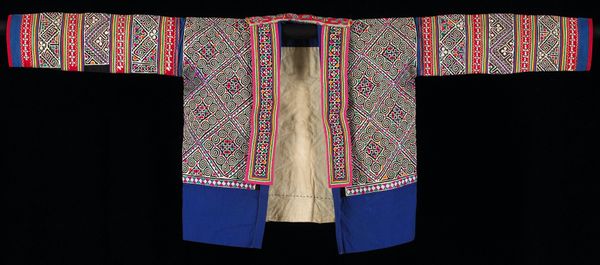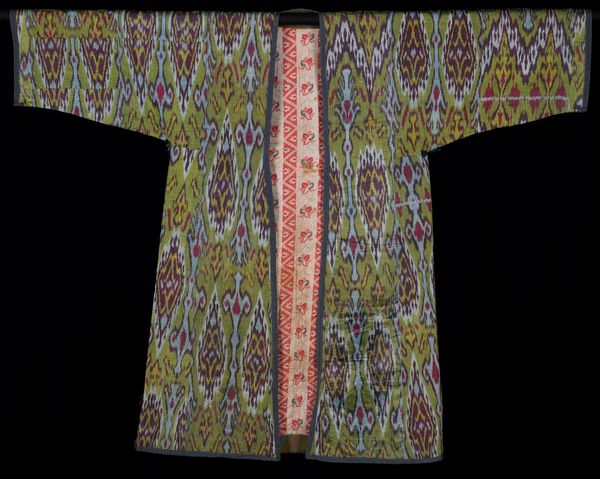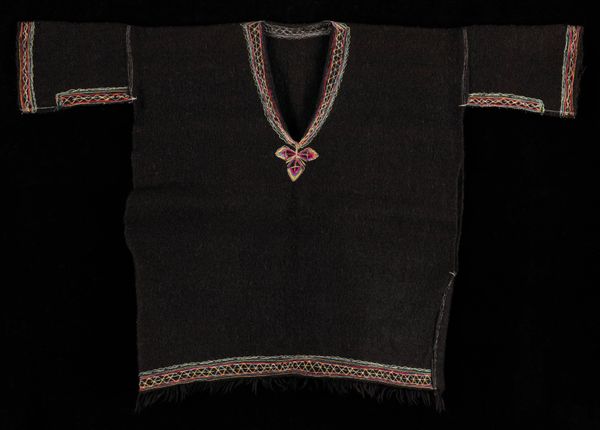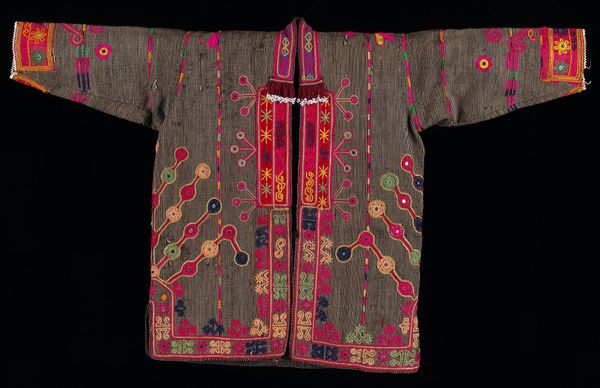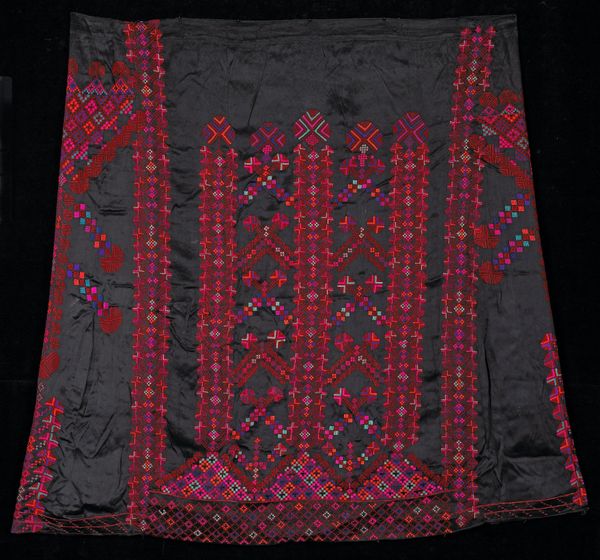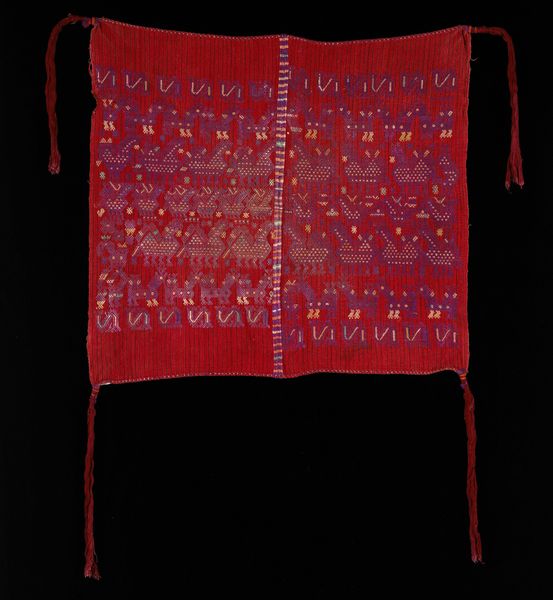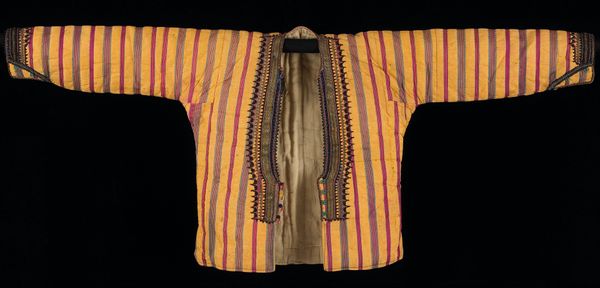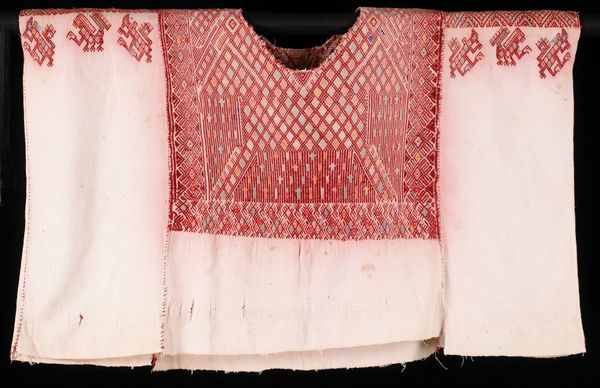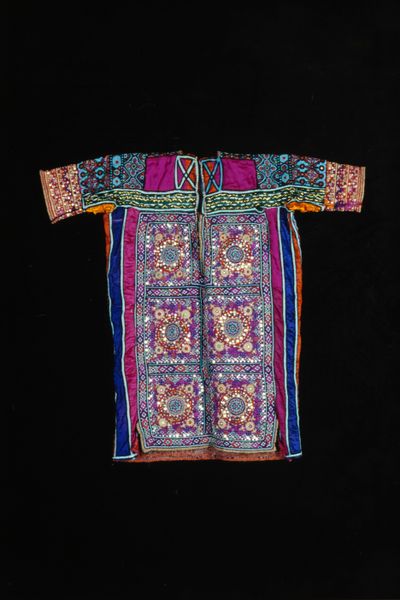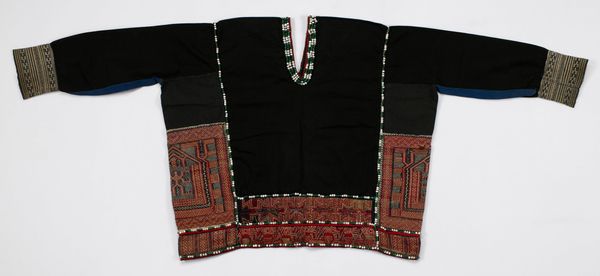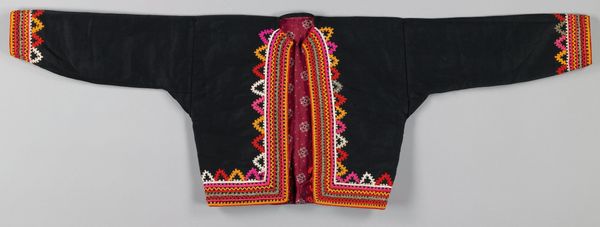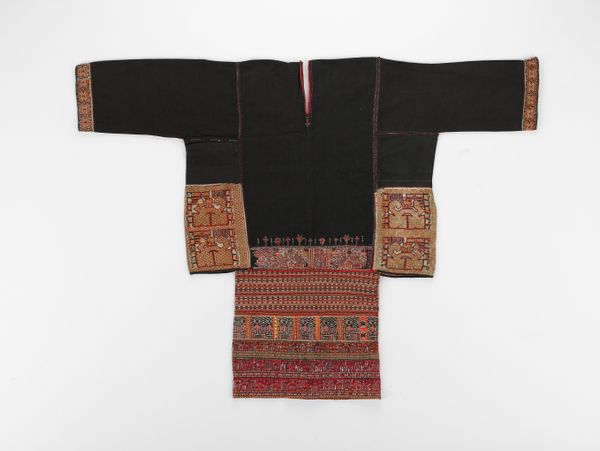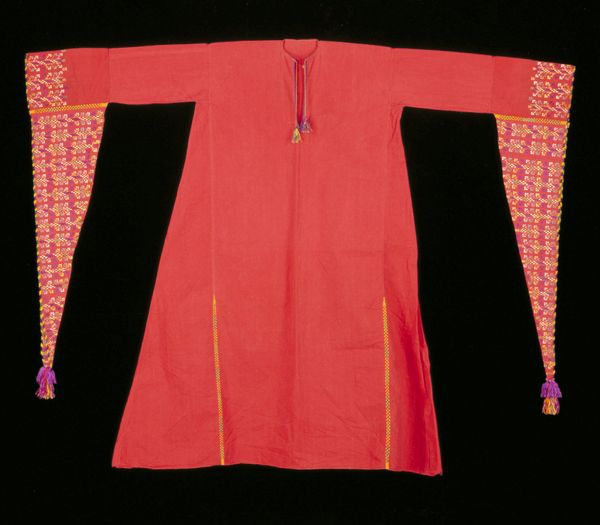
fibre-art, silk, textile, cotton
#
fibre-art
#
silk
#
asian-art
#
textile
#
geometric pattern
#
geometric
#
cotton
Dimensions: 22 x 22 in. (55.88 x 55.88 cm)
Copyright: Public Domain
Editor: Here we have a Hmong jacket, dating to around the 20th century. It’s made with fibre art techniques, incorporating silk and cotton. I am struck by how the dark background makes the geometric patterns really pop. What statements might this piece be making? Curator: It's a powerful piece. Let's consider its broader cultural context. Traditional Hmong textiles are often viewed as cultural preservation, resistance, and identity symbols. The geometric patterns, executed in fibre art with silk and cotton, might signify much more than simple decoration. How might these visual elements reflect broader historical experiences and the complex interplay of gender and cultural roles within the Hmong community? Editor: So, you’re suggesting these textiles act as more than just clothing; they carry a narrative about the Hmong people and their culture. Curator: Exactly. Think about the historical migrations of the Hmong people and their interactions with dominant cultures. The creation and wearing of such a jacket could be seen as a subtle act of defiance and a celebration of unique cultural heritage. Do you notice any elements within the geometric patterns that seem particularly significant or repeated? Editor: I do see a kind of star or flower shape repeated throughout, and that diamond pattern along the edges looks significant. Is it possible they represent something specific within Hmong culture? Curator: It's very possible. Researching those specific motifs within Hmong textile traditions could be really revealing, and further explore the work's function within social dynamics of the time. The textile becomes not just an art object, but an embodied text. Editor: That’s a perspective I hadn’t considered. Now, I am seeing it as a vibrant expression of cultural resilience. Curator: Precisely! Approaching the art history by embedding intersectional theories like feminist theory and postcolonial studies enhances our understanding. Editor: Thank you. I am going to go and explore this more deeply, using this broader interpretive lens.
Comments
No comments
Be the first to comment and join the conversation on the ultimate creative platform.
